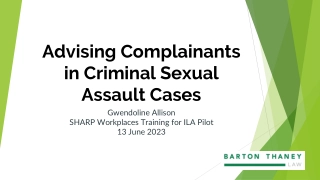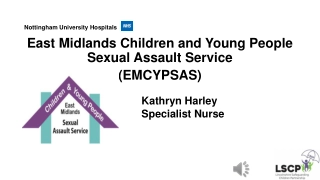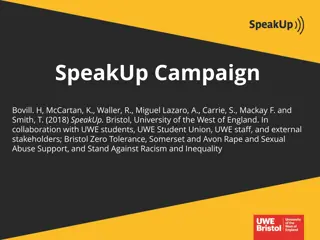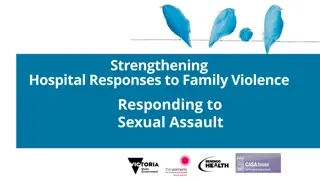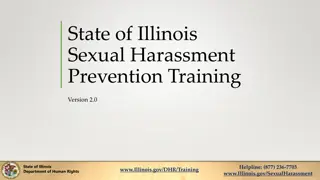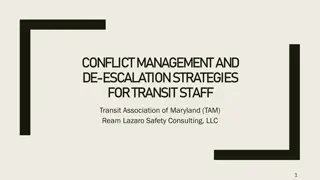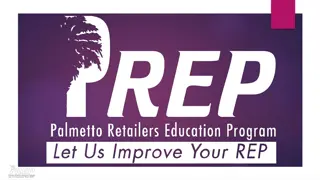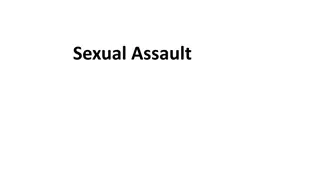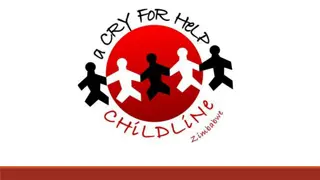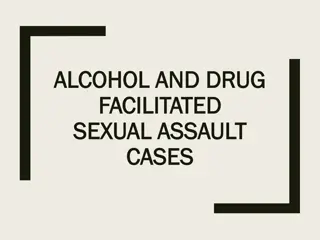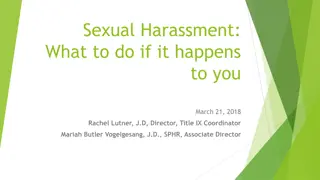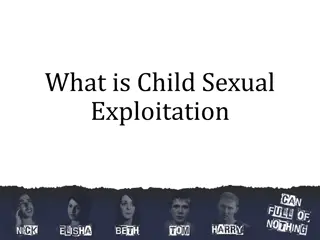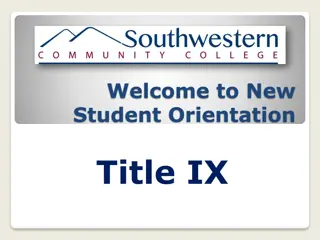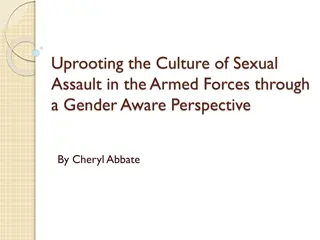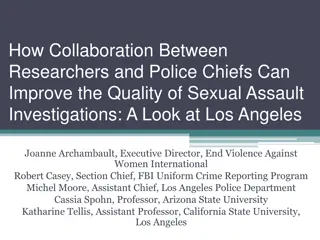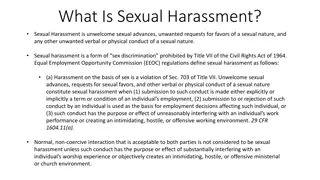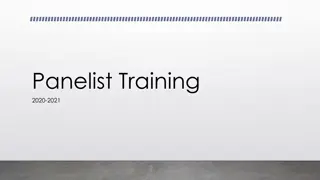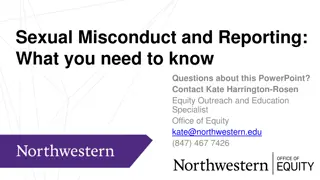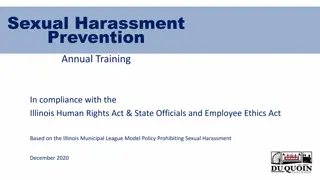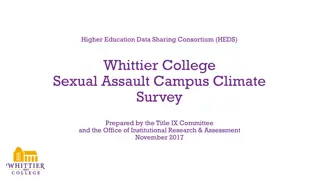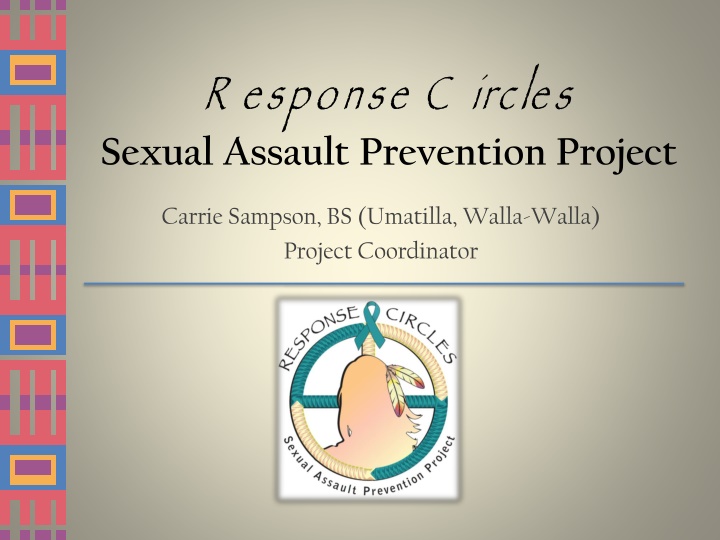
Addressing Sexual Assault in Native Communities: Prevention and Awareness Efforts
Discover the initiatives led by the R.esponse.C.ircles Sexual Assault Prevention Project to combat the hidden epidemic of sexual assault in Native American and Alaska Native communities. Learn about the Indian Health Service's efforts, Year 3 objectives, tribal recruitment, and sexual assault dynamics trainings. Join the conversation on prevention and support in tribal communities.
Download Presentation

Please find below an Image/Link to download the presentation.
The content on the website is provided AS IS for your information and personal use only. It may not be sold, licensed, or shared on other websites without obtaining consent from the author. If you encounter any issues during the download, it is possible that the publisher has removed the file from their server.
You are allowed to download the files provided on this website for personal or commercial use, subject to the condition that they are used lawfully. All files are the property of their respective owners.
The content on the website is provided AS IS for your information and personal use only. It may not be sold, licensed, or shared on other websites without obtaining consent from the author.
E N D
Presentation Transcript
R esponse C ircles Sexual Assault Prevention Project Carrie Sampson, BS (Umatilla, Walla-Walla) Project Coordinator
T he H idden E pidemic Can t say it enough . 34% or 1 in 3 Native women will be sexually assaulted in their lifetime American Indian and Alaska Native women are more than 2.5 times more likely to be raped or sexually assaulted than women in the USA in general Sexual assault is one of the most undisclosed and unreported crimes, especially for crimes committed against Native women and children. Consequently, the actual numbers of sexual assaults taking place in our Native communities are unknown.
IH S & S exual A ssault What is the Indian Health Service DVPI? A nationally-coordinated demonstration program aimed at addressing domestic violence, sexual assault and family violence within AI/AN communities. IHS doubled funding for the NPAIHB Sexual Assault Prevention Project for 3rdand final year The DVPI has awarded 65 projects to IHS, Tribal and Urban-operated programs FYI: IHS next steps include developing a sexual assault policy for all IHS facilities (beyond hospitals) and possibly the purchase of forensic equipment for IHS facilities (beyond hospitals) IHS information taken from IHS Policy Update presentation by Beverly Cotton, National SANE/SART Coordinator
Y ear 3 O bjectives IH S D V P I F unding for N P A IH B Increase public awareness addressing sexual assault using media campaign Tribal sexual assault dynamics trainings at 5 tribes Additional tribes will participate in the Sexual Assault Prevention Project SANE/SARRC Trainings in collaboration with Oregon Sexual Assault Task Force Project s participating tribes will hold community awareness events Project s participating tribes will implement school-based curriculum or youth group addressing sexual assault Victim Experience Surveys will be utilized at participating sites Community Readiness Surveys will be completed at participating sites
R esponse C ircles T ribal R ecruitment Currently have 3 tribes participating in the Sexual Assault Prevention Project: Swinomish Suquamish Warm Springs Recruiting 2 additional tribes to join the project in its final year
T ribal S exual A ssault D ynamics T rainings Purpose: Get the conversation going about the prevalence of sexual assault in tribal communities. Offer resources and information for tribes ready to break the silence, take down barriers and inform the community that it s okay to start talking. Capacity to offer training to 5 tribes Sexual Assault Educator: Lisa Norton (Siletz) Attend: Social Services, Tribal Council, Tribal Leaders, Clinic/Healthcare, Law Enforcement, Educators, Family Violence Programs, Community members NO cost to the tribes, Trainer will come to you Timeline: November 2012-May 2013
N orthwest C ollaboration A gainst S exual A ssault in T ribal C ommunities A collaboration between the Northwest Portland Area Indian Health Board and Oregon Sexual Assault Task Force Funded by: National Institute of Justice
T raining U pdate Sexual Assault Response & Resource Circle (SARRC) Training, May 2012 3 Tribes participated: Swinomish Tulalip Warm Springs What is a SARRC? A multi-disciplinary, inter-agency, community driven collaboration that organizes its members in a victim centered and offender-focused approach to intervention, response, and prevention of sexual assault
Benefits of a tribal SARRC: use of tribally specific practices of helping healing and justice healing of the community as a whole increased reporting increased access to services increased privacy for victims increased understanding of sexual assault dynamics and impact raises awareness and prevention of sexual assault Next Training- March 19-21, 2013
T raining U pdate Sexual Assault Nurse Examiner (SANE) Training, Sept 24-28, 2012 21 nurses in attendance that serve the following tribes: Burns Paiute Coeur D Alene Nez Perce Swinomish Colville Tulalip Grand Ronde Kalispel Umatilla Shoshone Paiute
Benefits of a tribal SANE: increased access to culturally appropriate sexual assault services shorter commutes for victims to obtain services no wait times in hospital emergency rooms accurate collection of forensic evidence leading to increased prosecution rates more comfortable environment for tribal victims Next Training- Fall 2013
Q uestions? Contact: Carrie Sampson csampson@npaihb.org (503) 416-3304

